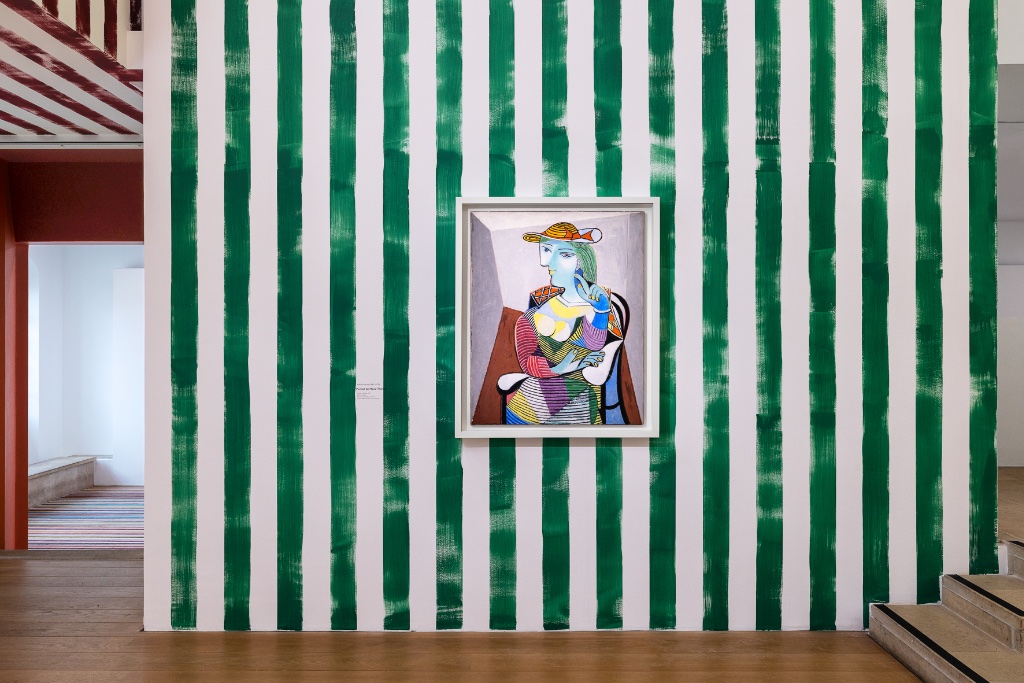
Two stars of the design world have been given carte blanche by Paris museums to express their creativity in temporary exhibitions: fashion designer Paul Smith at the Picasso Museum, and product designer Philippe Starck at the Carnavalet Museum, with very different results.
Smith has kept the focus on the artist, using colors and textures to enhance the experience of looking at the museum‘s permanent collection, while Starck spotlights his own work, playfully reinterpreting many of the projects he has designed over the years.
The Picasso Museum is commemorating the 50th anniversary of the death of the artist (on April 8, 1973) with the show “Picasso Celebration: The Collection in a New Light.” Smith was given a free hand to decorate 24 rooms in the museum for a rehang of 192 works, respecting a timeline that ranges from paintings by the 13-year-old artist to his late works.
Along the way, he varied the colors, backdrops and textures of each room either to bring out elements of the works shown or to create an appropriate mood. The room devoted to works from the youthful Picasso’s Blue Period, when he was depressed over the suicide of his close friend Carles Casagemas, is painted a somber shade of blue and is carpeted to provide a hushed, melancholy atmosphere corresponding to the dark theme of the paintings, including the famous self-portrait of 1901 in which the 19-year-old Picasso, dressed in black, looks like a much older man on the threshold of death.
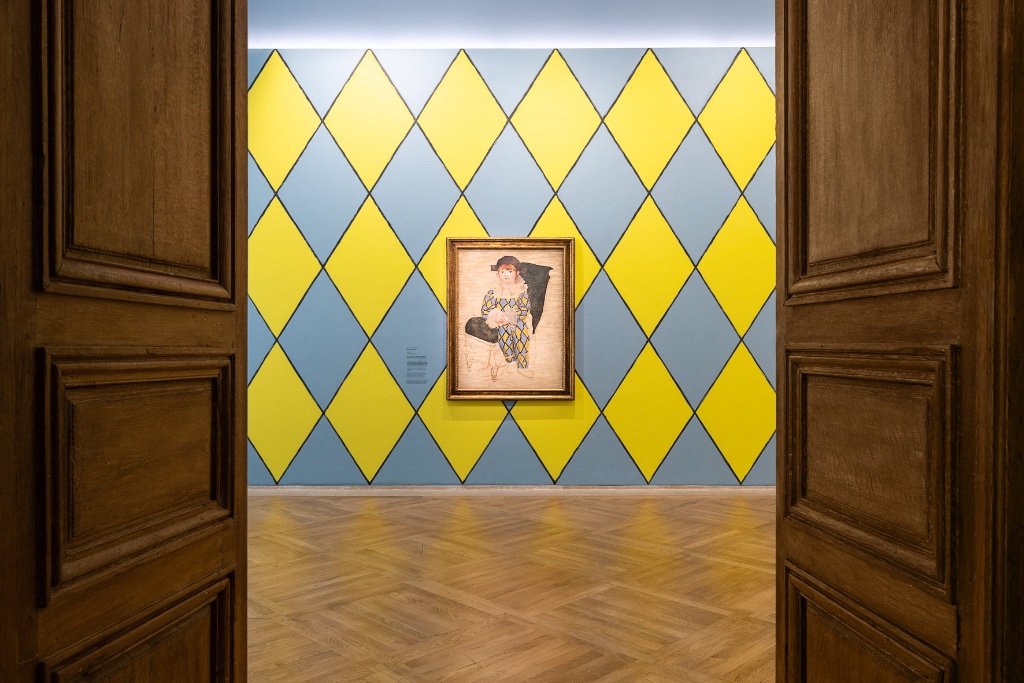
Some of these choices may seem obvious or clichéd – a bright pink room for the artist’s 1906 studies of the female body, for example, harlequin-patterned wallpaper for “Paul as Harlequin” (1924), mud-brown paint for the wartime paintings, and blood-red for the wonderful bullfighting works on paper – but it works beautifully to highlight various aspects of the paintings and create a fitting ambiance.
Smith’s famous colorful stripes, used often in his clothing designs, provide the backdrop for Picasso’s paintings of seated women (see image at the top of this page), themselves full of stripey patterns, and for the carpet on the ramp leading up to the museum’s top floor.
His intervention doesn’t please everyone, but I found it to be a bright, fun way to offer a new perspective on these sometimes-overexposed works. The redo of the decor will surely fulfill the designer’s aim of providing a “less conventional point of view” that will capture the attention of young people and those who are unfamiliar with Picasso’s work.
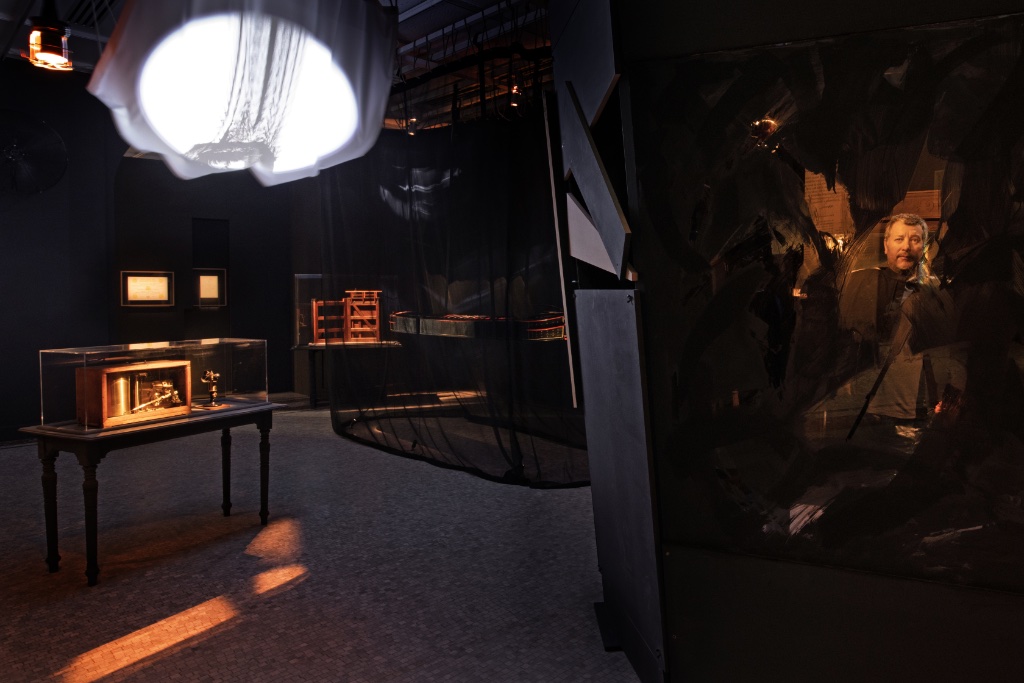
Over at the Musée Carnavalet, Philippe Starck looks at Paris through the many projects he has created for the city in the exhibition “Paris Is Pataphysical.” “Pataphysics,” invented by the French playwright Alfred Jarry (1873–1907), is “the science of imaginary solutions.”
The ebullient and prolific designer starts the show with the spotlight planted firmly on himself by presenting his wax figure from the Musée Grevin. Then, after a voyage through his favorite elements, air and water, as represented by the Eiffel Tower and the Canal Saint Martin, he explores some crazy ideas expounded by others: straighten out the ring road around Paris, for example, or replace bicycle tires with snowshoes.
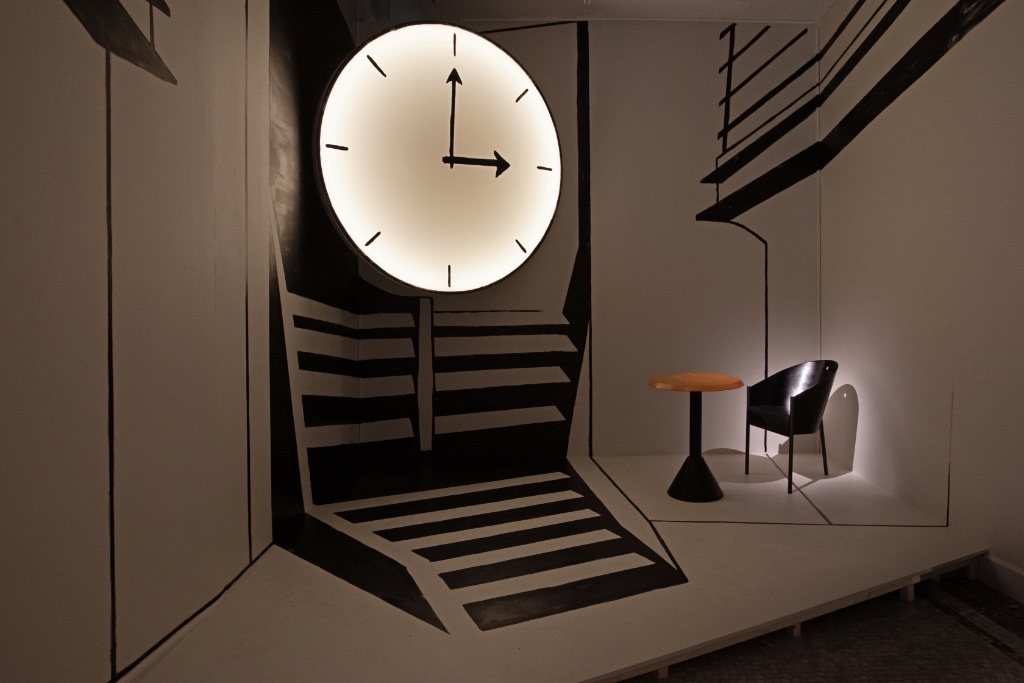
He then turns to revisiting some of his projects, such as Les Bains Douches (a public bathhouse he turned into one of Paris’s hottest nightclubs in the late ’70s), complete with the white-tiled walls and music on headphones, and the famous Café Costes on the Place des Innocents, which was revolutionary in its time (the 1980s), with its enormous clock, inverted staircase and amazing restrooms.
These and other projects are illustrated with mockups of the originals and some artifacts from them (ashtrays and dishes from Les Bains, chairs and a table from Café Costes, etc.). As is his wont (if you’ve ever stayed in a Starck-designed hotel, you’ll understand), every display is cloaked in darkness.
This exhibition is fun, phantasmagorical and sometimes incomprehensible. Starck has a sense of humor and a tiny bit of humility (some of the exhibits are based on failed projects – he has had flops as well as many successes). You leave it feeling like you have just seen a fancy promotional show for a designer whose brain is always frothing with ideas.
Note: While you’re at the Picasso Museum, pay a visit to another colorful exhibition: “Faith Ringgold: Black Is Beautiful” (through July 2, 2023), featuring the American artist, whose commitment to civil rights and feminism has never wavered.
See our list of Current & Upcoming Exhibitions to find out what else is happening in the Paris art world.
Favorite
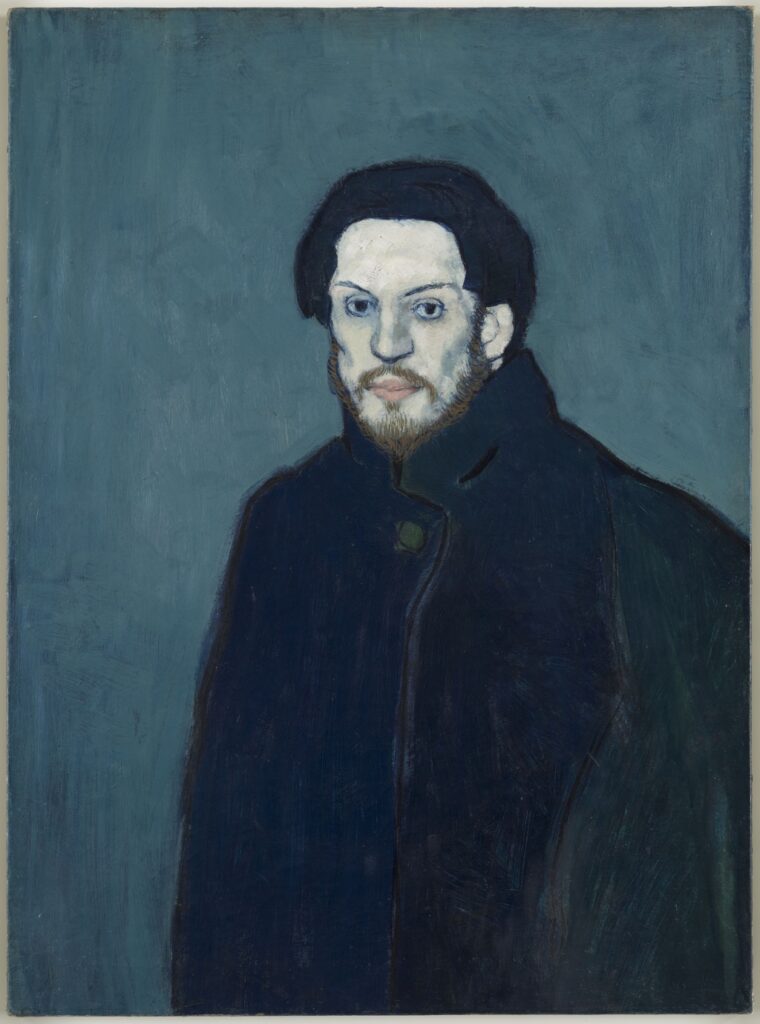
The Starck exhibit seemed to be a parody of over-inflated, self-infatuated nullity. Yet one quickly realizes this is not a parody: there is no sense of irony, no humor, but instead a underlying desperate attempt to present oneself as an artist. The exhibit violates just about every conceivable tenant concerning the engagement between artist and viewer, how the act of creativity is an opening, an expression of search and questioning, of humility. Rarely have I experienced such a dispiriting sense of self-absorption. There are several fine art exhibits in Paris, and the Musee Carnavalet itself since its renovation has offered well conceived and curated exhibitions. But not this.
Why do I love Paris Update?!
Because, otherwise, why would I look up “pataphysical” ?!